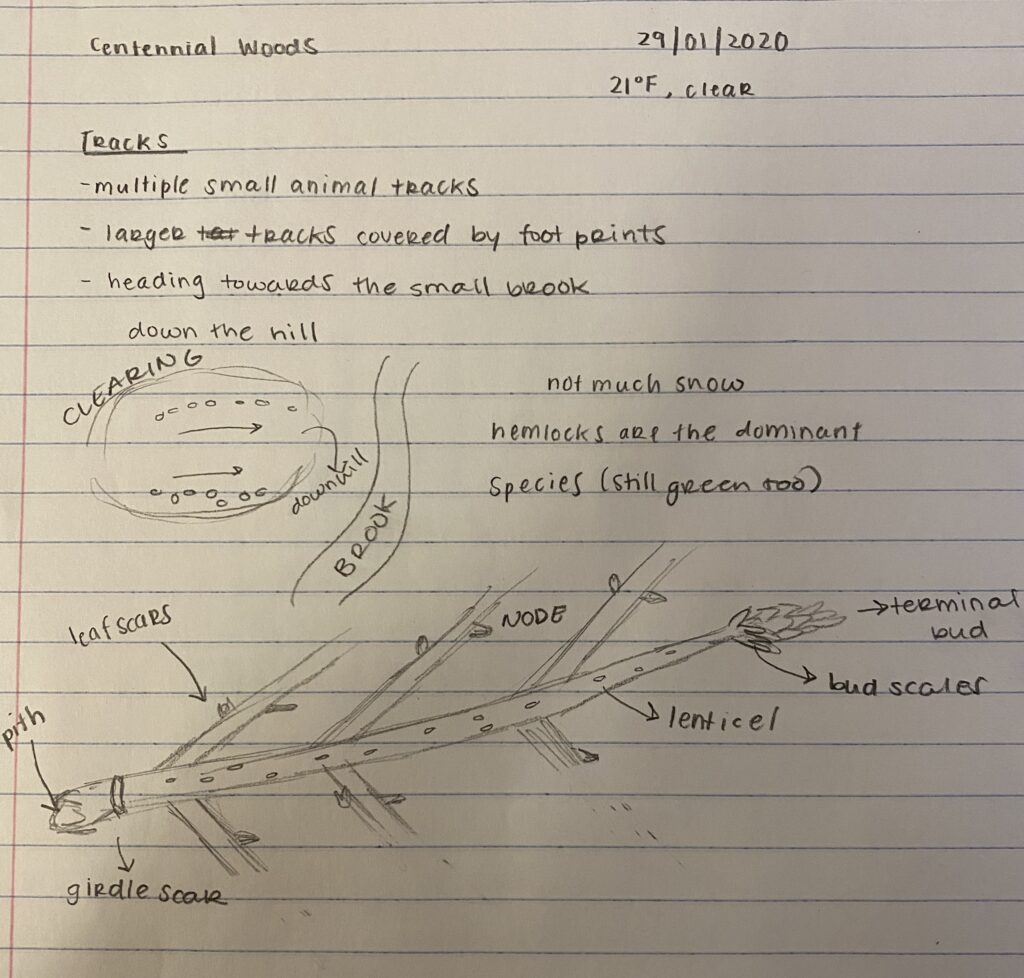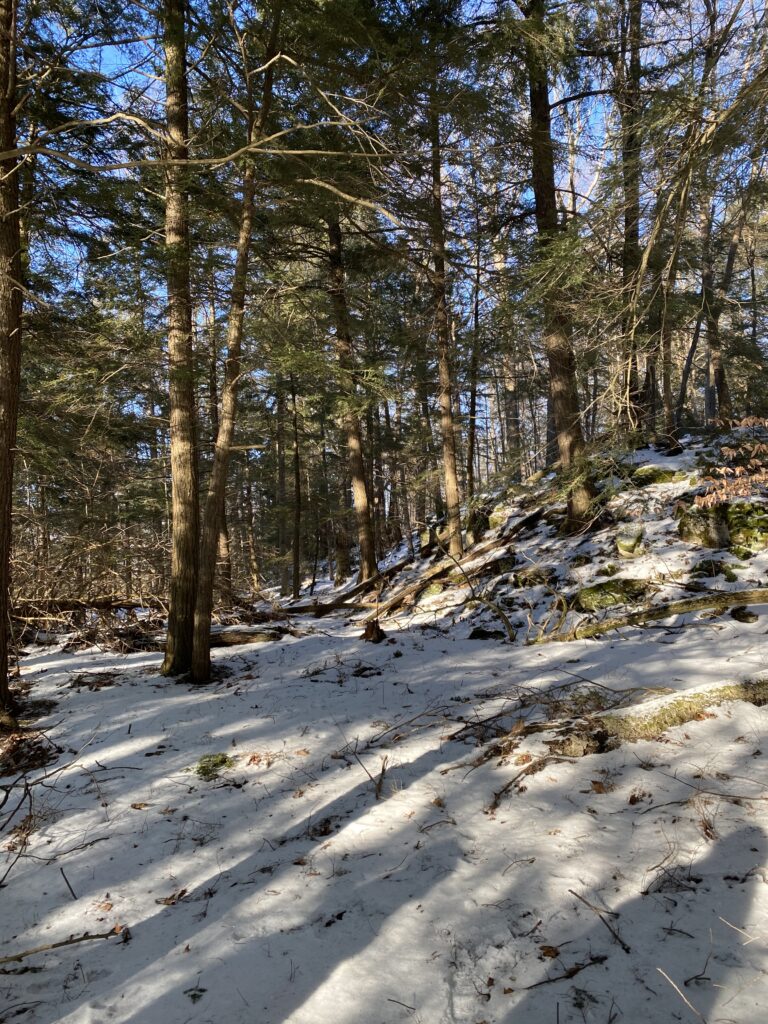
Howdy folks, and welcome back! Lots has been happening around Burlington since my last post, mainly snow. While last semester, my phenology site could be found along the Burlington Bike Path, I decided to move it for this semester into Centennial Woods (the sheer amount of bikes in the bike room makes it almost impossible to hit the road). From WDW hall, my new location is a quick skip and a jump across campus. Start by heading off of Redstone Campus towards the Patrick Gym by walking either under the Redstone Lofts or walking behind Coolidge and Southwick Hall. Once at the Gym, turn right and walk through the lower parking lot of the Harris-Millis Complex until you reach Main St and the large crosswalk. Continue to walk straight until you reach the American Cancer Society house (pretty white house with green trim) and turn right across the crosswalk (wait for the walk sign). Walk straight down this street until you see a green sign saying “Centennial Natural Area” and walk down the trail into the woods. Once in the woods, follow the trail until the first small open clearing and that’s where you will find my new site!
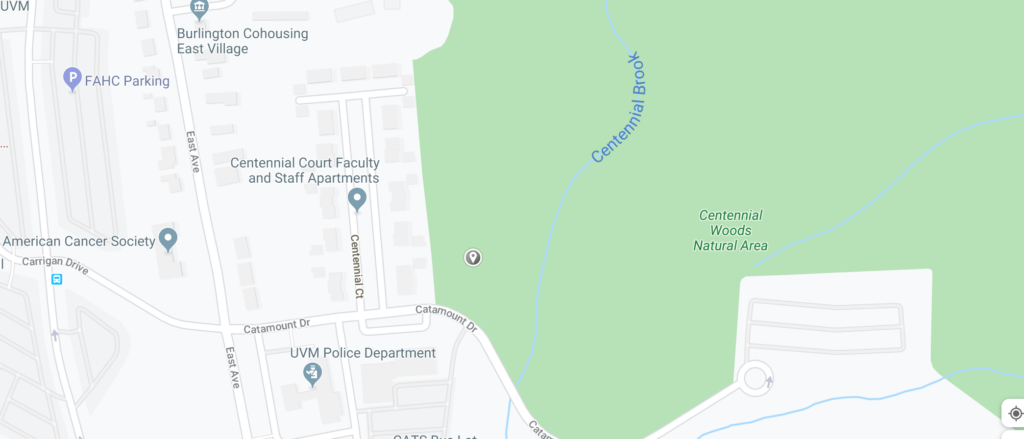
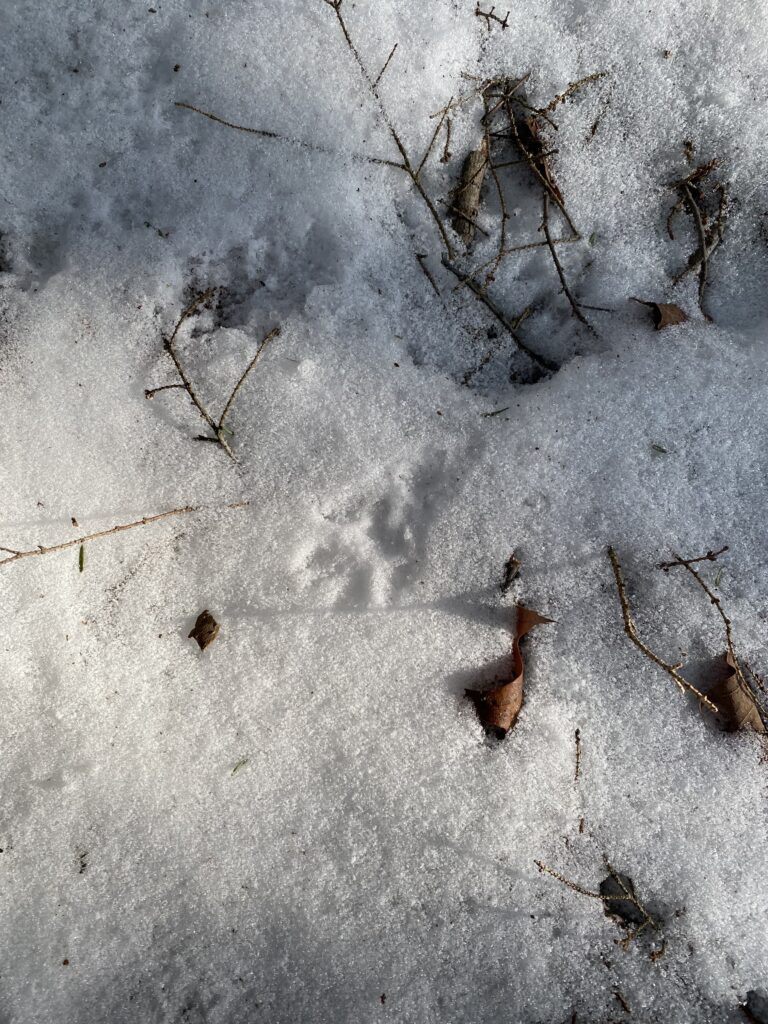
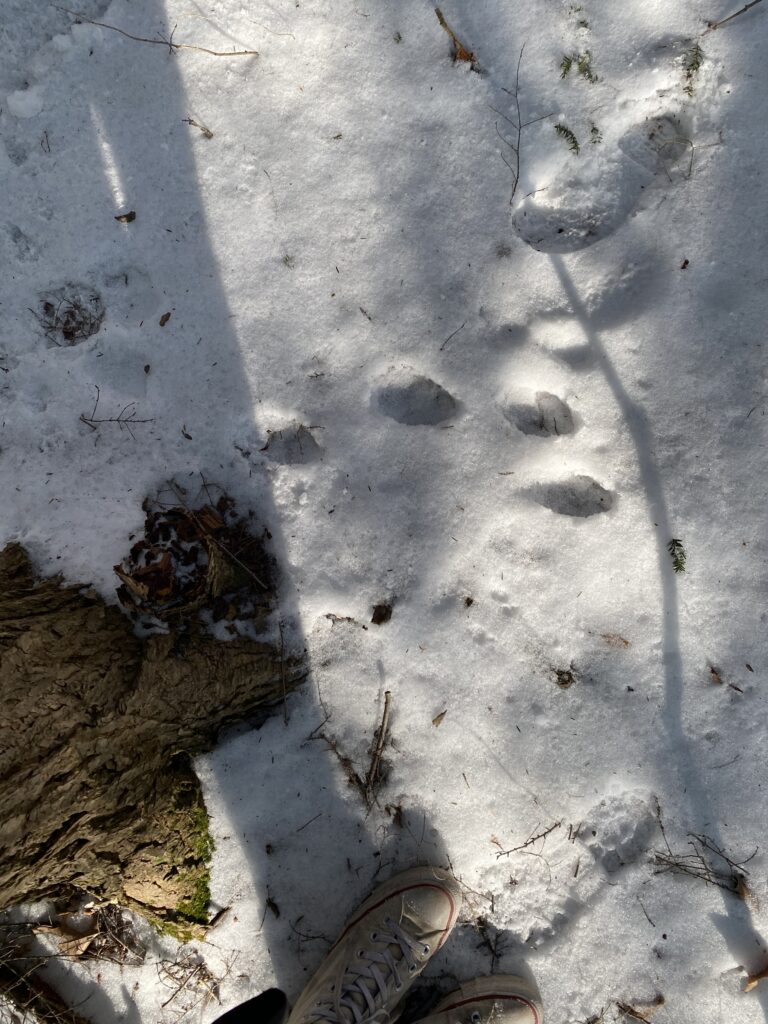
On this visit, I found countless squirrel and small hare tracks. Sadly, the snow cover in Centennial more resembled ice than powdery snow making tracking slightly more difficult. To add insult to injury, the larger tracks scattered around the forest floor were contaminated with human tracks making identification nearly impossible. The squirrel tracks gave me the least difficulty in identifying because of the small size and distinctive foot pattern (see Figure 1). The long foot length helped me to classify these prints as Grey Squirrel. After the squirrel tracks, I found what I assume to be rabbit tracks (see Figure 2). Like the squirrel tracks, these new ones were small and close together. However, they did not match a hopping gait like that of the squirrels. Instead, these tracks followed a galloping pattern similar to what hares leave when jumping through the snow.
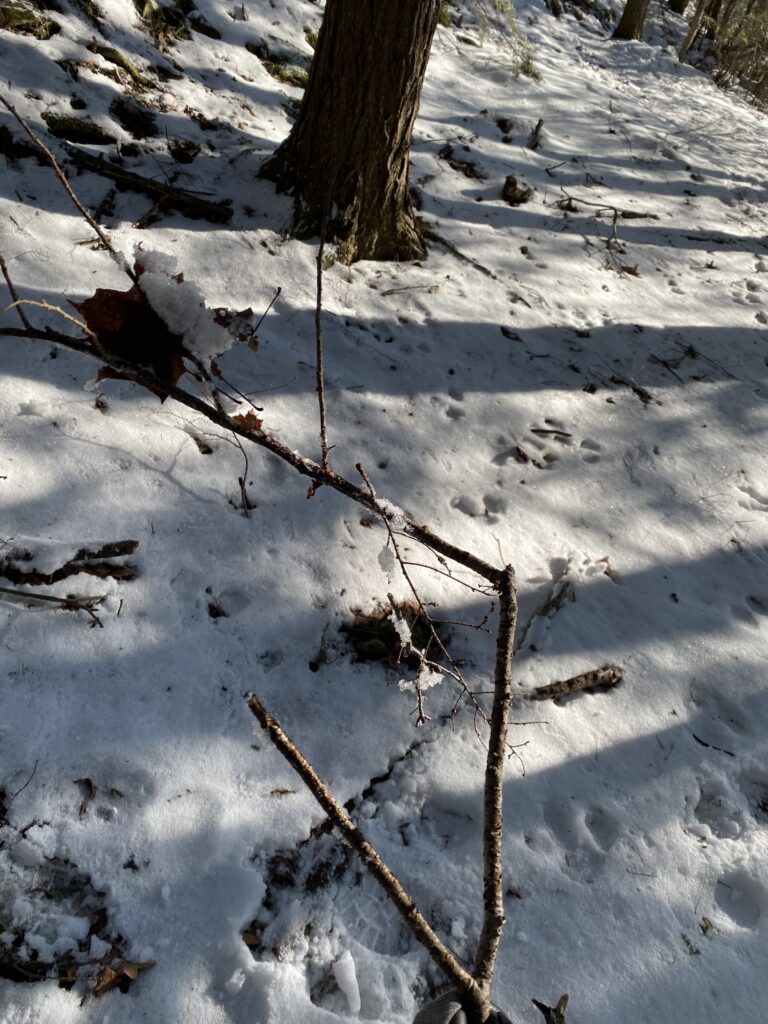
This new spot I chose happens to be surrounded by Eastern Hemlock Trees, easily identifiable with their still green needles and distinct height. Scattered within the Hemlocks, I could make out a handful of small Sugar Maple saplings. I also found a few twigs (see Figure 3) littered across the ground also belonging to Sugar Maples.
